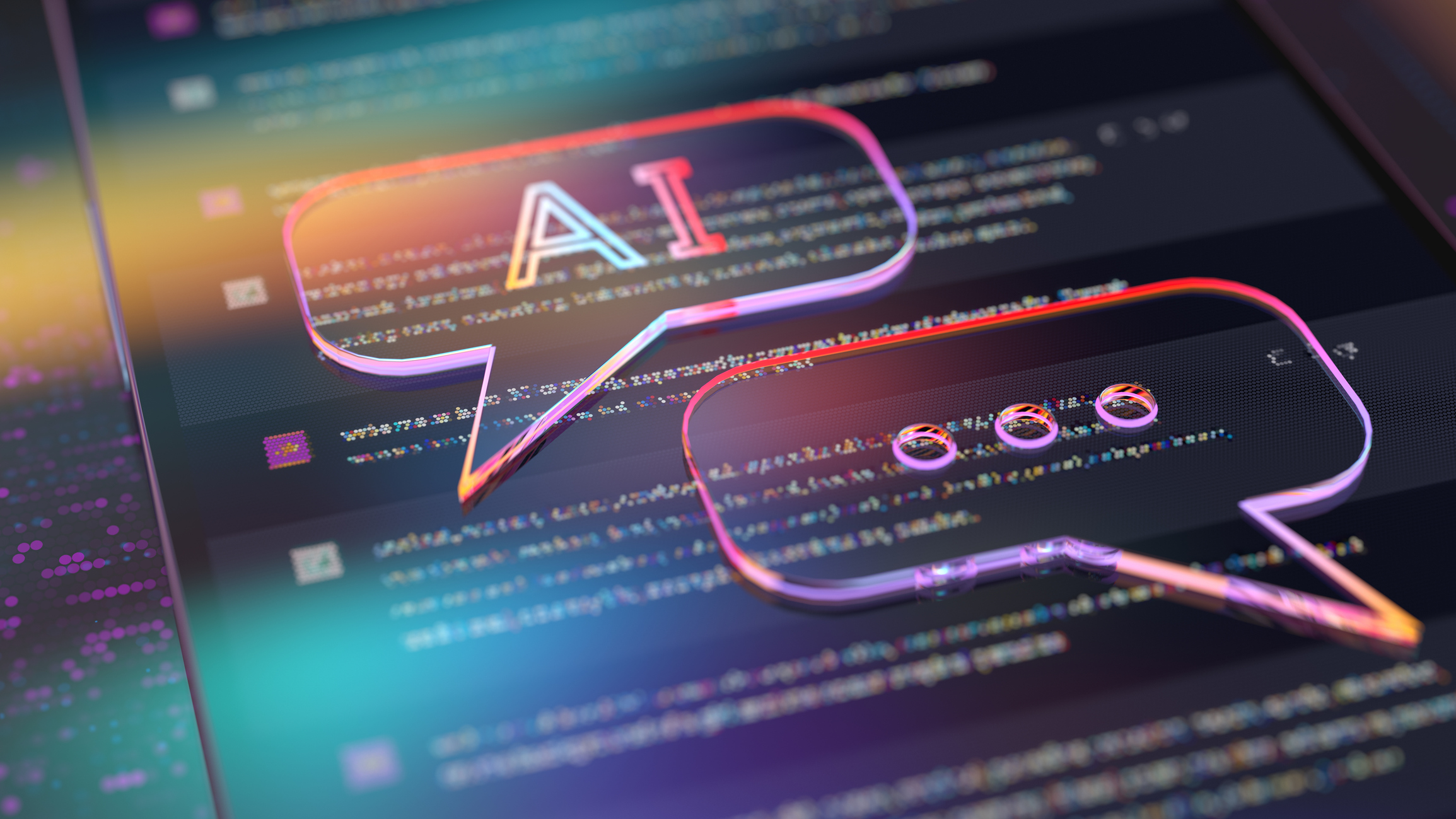How AI fits into the restaurant experience
In today’s tech-forward world, terms like “artificial intelligence” and “machine learning” have become much more mainstream. And it’s not just jargon—we’re seeing this technology emerge in various industries – from supply chain and healthcare to retail and entertainment, to restaurants and food service. Although the term ‘AI’ might still conjure up visions of robotics and futuristic movies, the reality is much more practical and common than you might think.
Although "AI” and “machine learning” are often used interchangeably, they are different. Before we dive into how AI is becoming an essential tool for the restaurant industry, it's important to understand what these terms mean and how they’re different. According to Microsoft, artificial intelligence (AI) and machine learning are closely related and connected – but not the same thing. AI is “capability of a computer system to mimic human cognitive functions such as learning and problem-solving”. Machine learning is a subset of AI that uses “mathematical models of data to help a computer learn without direct instruction. This enables a computer system to continue learning and improving on its own, based on experience.”
How is AI relevant to the restaurant industry?
As AI continues to become more readily available and mainstream, it’s only natural that it is utilized by one of the largest and most customer-oriented industries. Introduced into the food industry, AI can be used on both the front and back end of the establishment, such as optimizing inventories, personalizing the guest experience or optimizing ordering tools.
According to a recent survey on restaurant automation, 76% of restaurants use three or more AI or other automation tools in the management of their front-of-house worker. When it comes to back-of-house operations, such as inventory management, food safety monitoring, employee management and performance analysis, 96% of restaurants surveyed reported using automation tools. The survey also highlighted that 56% of respondents report that their revenue has increased since implementing automated and smart tools.
But before you incorporate AI tools into your business, it’s important to understand how they fit into the restaurant experience and where they make the most sense for your restaurant.
Artificial Intelligence for Restaurants

In the food industry, AI technology is most commonly used for automation and optimization. Time of day, time of year, local events and economic conditions all affect restaurant operations. In a highly volatile industry with many variables, AI-powered tools are more capable of adaptation than static software and machinery, making your restaurant able to withstand changes. AI tools not only track important metrics, but also more easily analyze and recognize patterns. Alternatively for some restaurants, AI technology can be a way to improve the level of service they offer, allowing for a more unique and personalized experience for customers looking for innovation.
There are countless ways you can consider using AI in your restaurant, such as:
Enhancing the guest experience and driving consumer spend
From conversational AI and chatbots at the reception to robots that carry orders to tables, AI tools that directly interact with patrons are a sure way to provide a unique experience. AI-powered software can also greatly improve order accuracy, ensuring no detail goes unnoticed by the employees before the order is out for delivery or to the tables.
It could also be as simple as using a data management and loyalty platform that has adaptive behaviors based on your guests individually. The more your customer interacts with the marketing and loyalty platform, the smarter the system gets in providing unique offers tailored to them—ultimately driving more spend with your restaurant, powered through machine learning.
Solving long-term staffing challenges
One of the first aspects of restaurant management where the integration of AI and machine learning can be applied is staff and employee management. With the use of AI, staff schedules can be generated automatically based on factors such as customer demand, foot traffic, staff availability and even past employee performance. Not only does this save time and reduce the margin of error, but it also ensures you'll have the right staff in place at the right time.
As for the workers themselves, the use of machine learning can make the job more desirable for workers by removing manual functions that diminish the employee experience, therefore reducing the overall turnover rate in the restaurant industry. For example, machine learning-powered systems can help keep track of employee performance, providing real-time feedback and pinpointing areas for improvement. This not only helps your staff grow professionally, but it also creates a positive and organized work environment.
Automating time-consuming tasks
The logistics of running a restaurant can be challenging, especially when it comes to managing inventory. Research found that 40% of all food waste in America is linked to restaurants, grocery stores and food service companies. Using AI-powered smart management to monitor and manage your inventory can greatly help with reducing food waste. AI can even forecast the demand for certain offerings and items to recommend ordering a proportionate quantity.
Restaurants can leverage the power of machine learning to automate many time-consuming tasks, freeing up managers to focus on the day-to-day impact of service delivery and customer engagement, as well as delivering the best customer experience possible.
Moving to an AI-powered drive-thru
A guest mobile-led or kiosk ordering system is a convenient alternative for customers to manage their own purchases without employee involvement.
With technology such as facial recognition or chatbot ordering, restaurants can create a unique ordering experience for drive-thru customers. For example, facial recognition technology in drive-thru service can help restaurants personalize the customer experience. By tracking customer behavior and preferences, restaurants can make menu recommendations and even offer specials tied to their previous purchasing patterns. However, when implementing technology like facial recognition, it’s important to understand that customers of different ages will respond to it differently. For instance, millennials and younger customers have grown up with a level of comfort with their photos being captured and being shared on social media, so the thought of facial recognition might not alarm them, but older customers might be more resistant. As such, it’s important to keep your customer base in mind when choosing the right AI-powered tools for your restaurant.
Keeping your restaurant running—even when an issue arises
When guests come into your restaurant, they don’t think about your point-of-sale, cash register, or any other type of technology—until something goes down. When a vital part of your restaurant infrastructure falls apart, it can stifle both your restaurant operations and your guests’ experience, which directly affects your bottom line. With traditional POS solutions, sales must come to a halt as you manually correct whatever the issue is.
In contrast, AI can take manual labor out of the technology environment, connecting all products into one platform ecosystem that integrates support into it. That means that if anything goes down, the rest of the ecosystem can report it to the appropriate support teams and correct itself without you needing to do anything. This can look like robotic process automation or machine learning tools, both of which help keep your restaurant operationally up and running.
Driving an efficient kitchen that continuously delivers
AI in the kitchen means having technology that organizes orders and plates so that staff understands the who, what, where, and when of each order. For starters, it can keep your inventory up to date; if an item goes out of stock, the kitchen will automatically notify the POS so staff can inform guests. An AI-powered kitchen particularly shines once the orders are made, eliminating many areas where human error could result in a bad experience for guests. A common opportunity for mistakes happens when front-of-house staff use paper tickets to communicate orders to the kitchen, where there can be a mix up in handwriting or the timing or orders; in contrast, restaurants that utilize AI in the kitchen can organize orders clearly, timing them based on when they were sent. It can also show orders that have been in the back for a long time, so you don’t keep customers waiting too long. Technology can also sort orders based on whether they were dine-in, takeout or from a third-party, so the plating can be done accurately without wasting plates or containers.
Technology also comes in handy with instructing the staff on how to cook everything. If you have a new staff, it can teach them how to prepare and cook items without a manager needing to step away from their duties. If you have a multilingual staff, kitchen technology can also translate steps and instructions. It can also predict when certain items should be cooked so that the entire plate is finished at the same time and fresh for the patron. AI helps keep your staff organized and informed on the right orders at the right time so that your guests can have a great experience, regardless of who’s in the back.
While AI might seem foreign, complex or intimidating, its use in the restaurant environment helps to slim down the needs and demands for the restaurant operator or manager. Wherever there’s technology in your restaurant, AI can simplify time-consuming tasks and work together with you and your staff to create the best experience for your guests.






